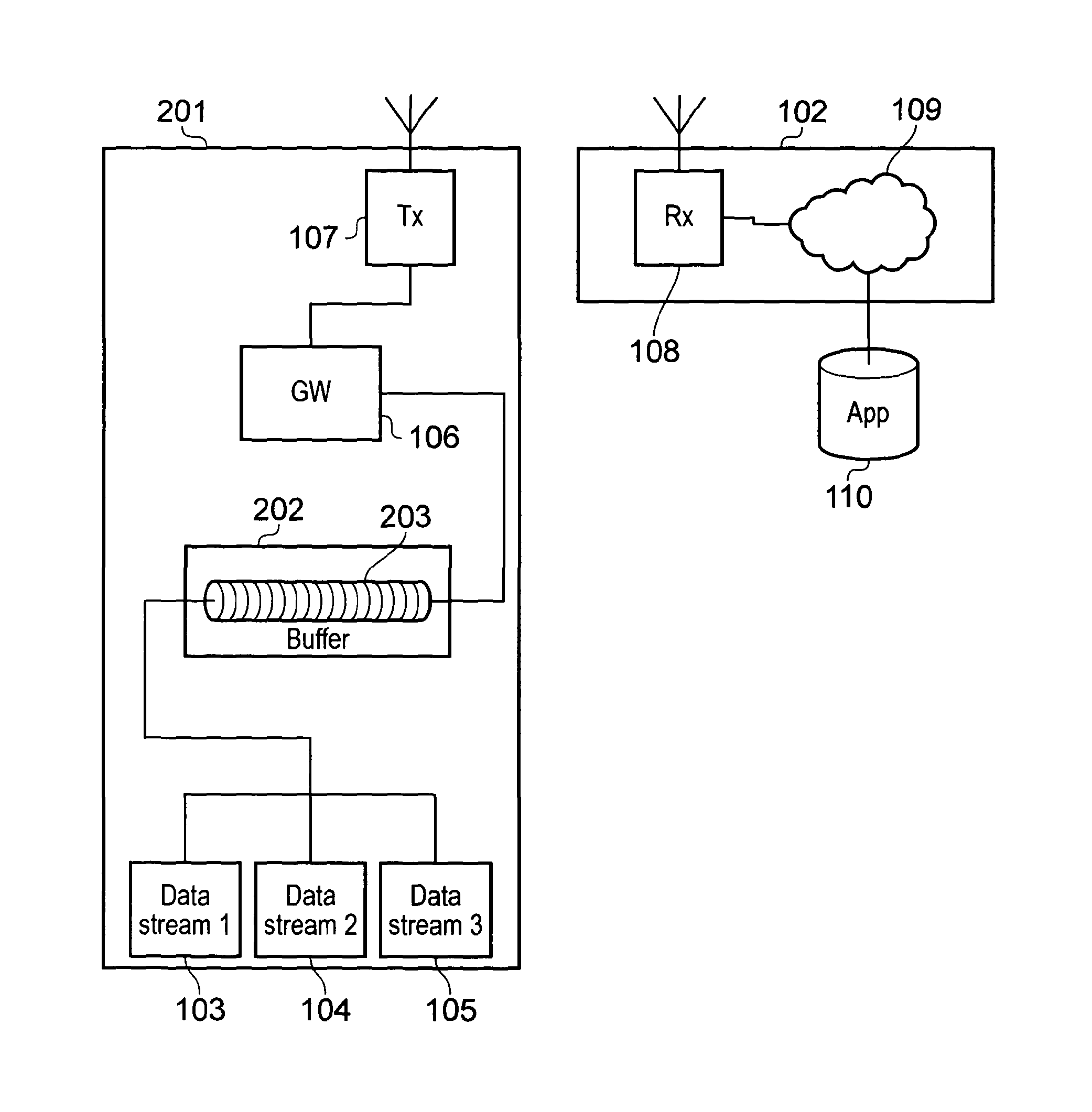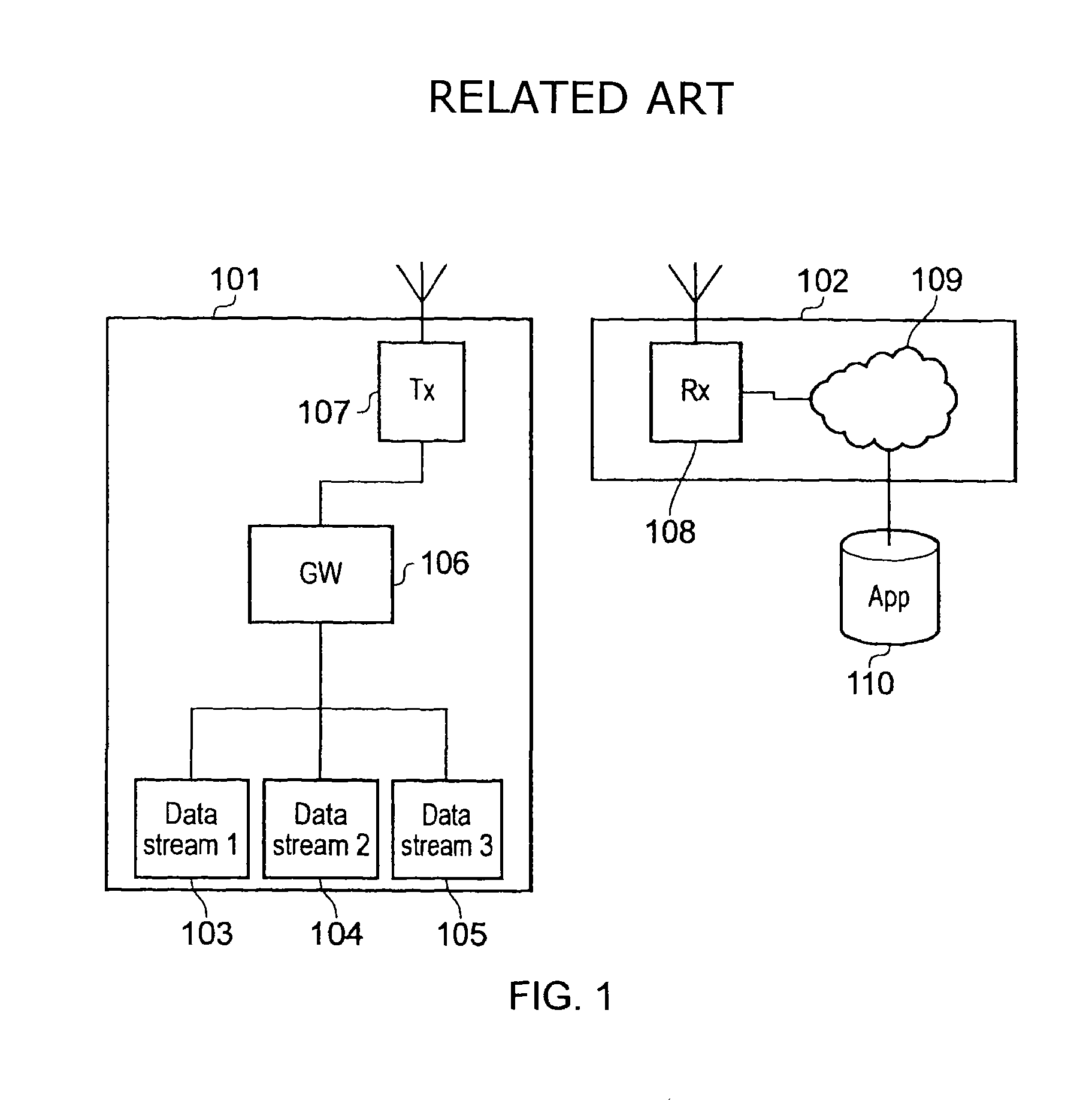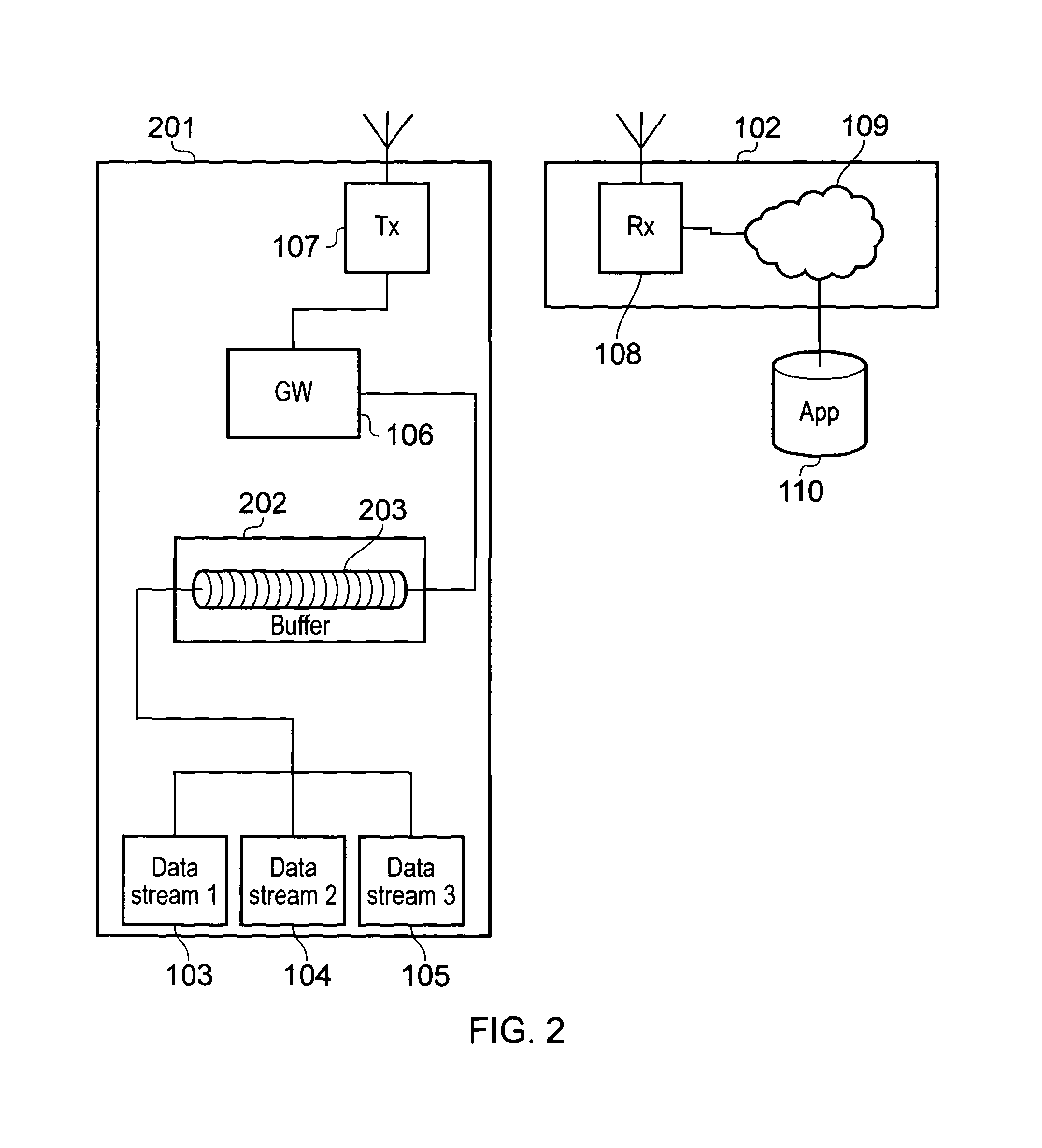Apparatus, method and system for managing data transmission
a technology of data transmission and apparatus, applied in the field of communication systems, can solve the problems of reducing inefficient use, and inefficient transmission of data as soon as it is available to be transmitted, so as to reduce the ability of other devices, reduce the overall system efficiency, and reduce the length of time
- Summary
- Abstract
- Description
- Claims
- Application Information
AI Technical Summary
Benefits of technology
Problems solved by technology
Method used
Image
Examples
Embodiment Construction
[0032]FIG. 1 shows a schematic diagram illustrating an example of a conventional wireless communication system. The communication system includes a transmitter unit 101 which is arranged to communicate data to a network 102. The transmitter unit 101 includes a first data stream 103, a second data stream 104 and a third data stream 105. The data streams send data to a data gateway 106. The data gateway 106 converts the data received from the data streams 103, 104, 105 into a format suitable for wireless transmission and sends the data to a transmitter 107 which wirelessly transmits the data to a receiver 108 in the network 102 via a wireless interface. The received data is sent via network routing 109 to an application server 110 which processes the received data as required. The data streams may each originate from different devices such as a sensor providing various telemetry information to the application server 110.
[0033]The wireless interface may be provided using conventional c...
PUM
 Login to View More
Login to View More Abstract
Description
Claims
Application Information
 Login to View More
Login to View More - R&D
- Intellectual Property
- Life Sciences
- Materials
- Tech Scout
- Unparalleled Data Quality
- Higher Quality Content
- 60% Fewer Hallucinations
Browse by: Latest US Patents, China's latest patents, Technical Efficacy Thesaurus, Application Domain, Technology Topic, Popular Technical Reports.
© 2025 PatSnap. All rights reserved.Legal|Privacy policy|Modern Slavery Act Transparency Statement|Sitemap|About US| Contact US: help@patsnap.com



